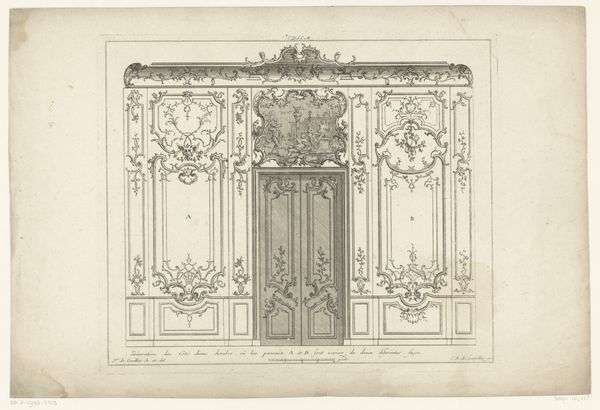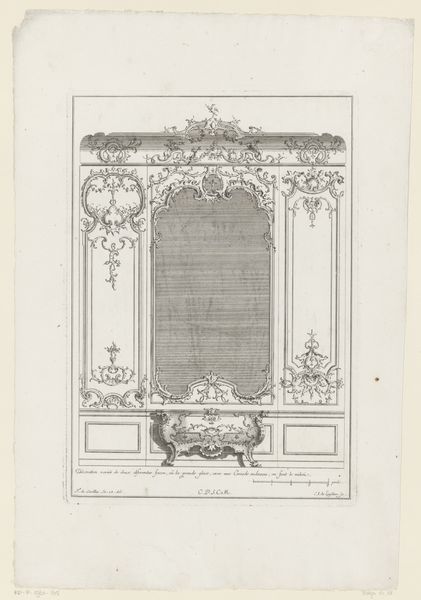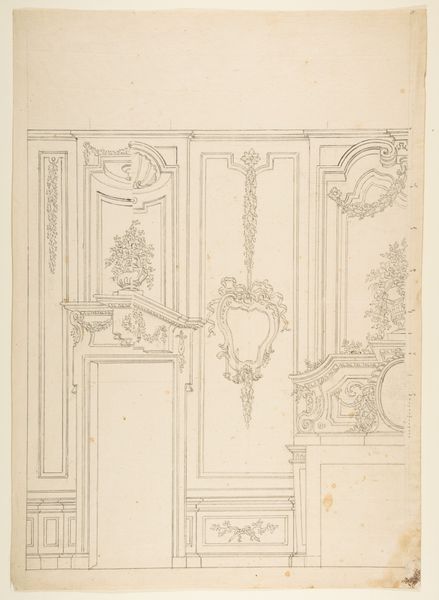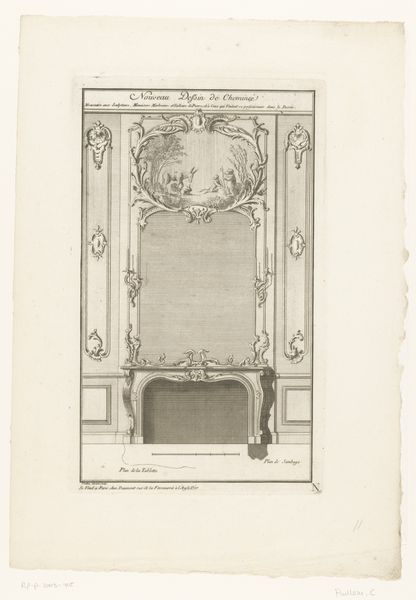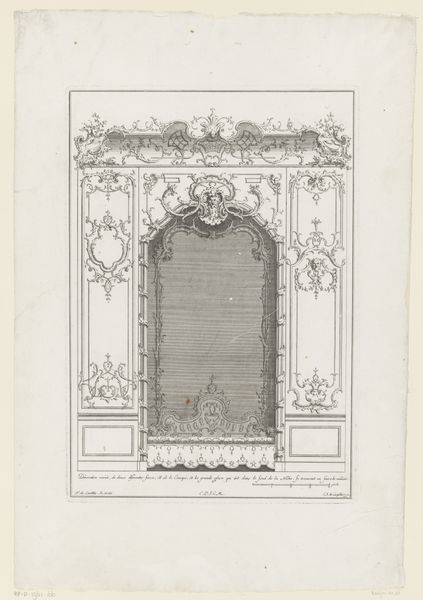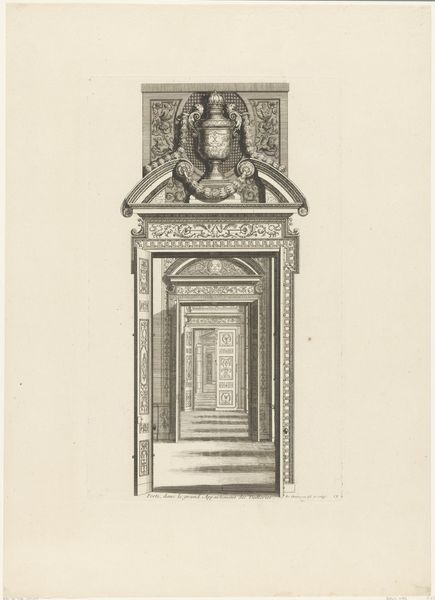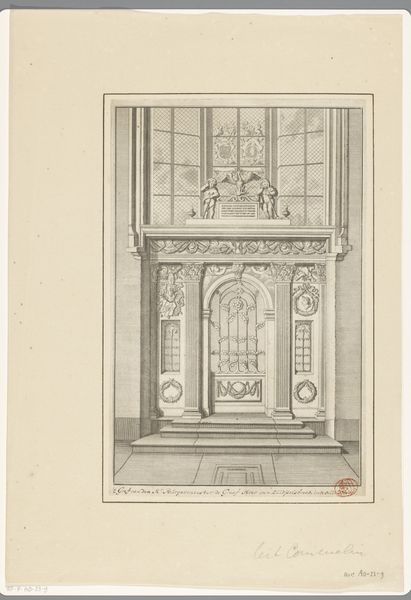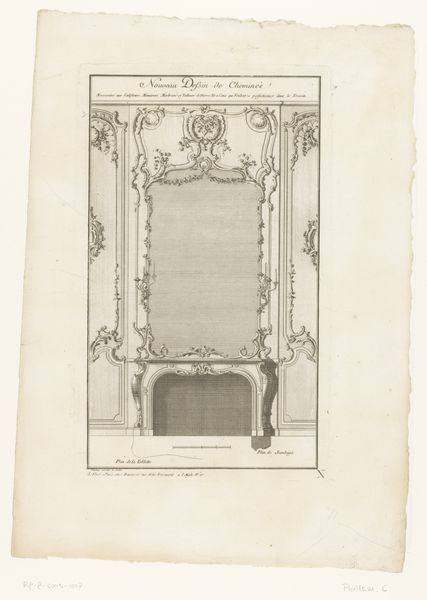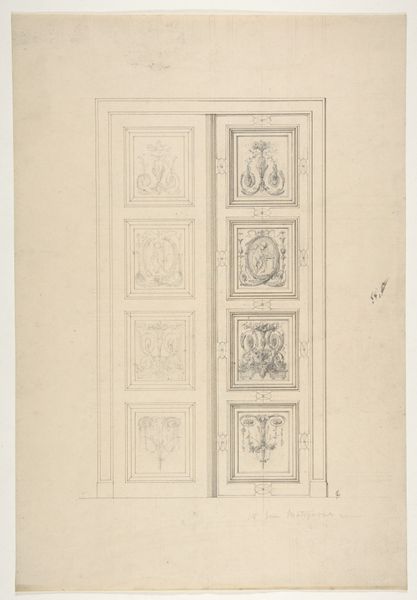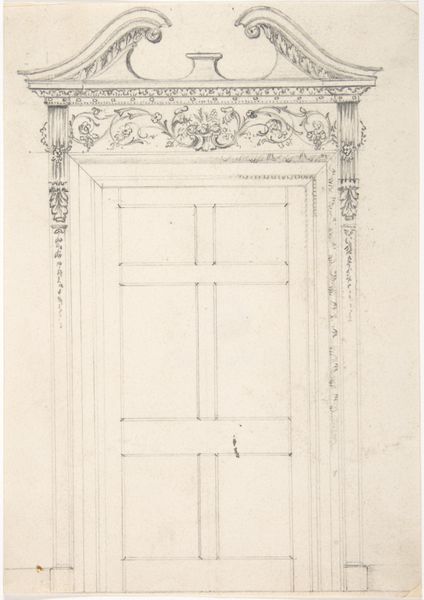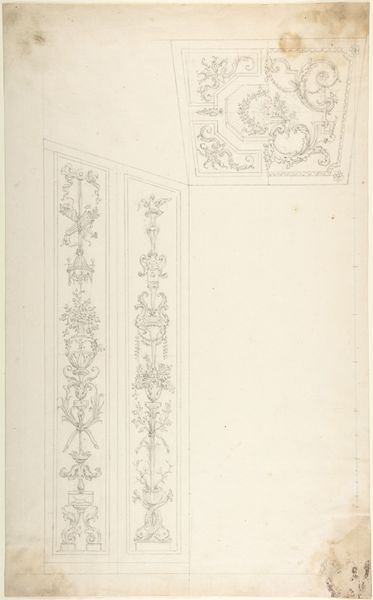
drawing, print, paper, engraving, architecture
#
drawing
#
baroque
# print
#
paper
#
line
#
engraving
#
architecture
Dimensions: height 338 mm, width 240 mm
Copyright: Rijks Museum: Open Domain
Curator: This precise engraving, simply titled "Door and Panels," dates from between 1733 and 1768 and is attributed to Carl Albert von Lespilliez. You can see it here at the Rijksmuseum. What’s your first take on this baroque architectural study? Editor: It feels incredibly controlled, almost austere despite the ornate details. It’s a study in contrasts, the sharp lines and rigid structure softened by flourishes of organic, almost playful, decoration. Curator: Absolutely. The piece exists within a broader historical context, one deeply influenced by architectural publications of the time and their impact on shaping social and cultural ideals. Editor: Let’s talk about those social ideals. What kind of messages are encoded in this display of controlled opulence? The rigid formality hints at societal expectations of that time. Does this reinforce or challenge them, do you think? Curator: The very act of documenting interior design like this reinforced those power structures. It allowed the elite to circulate and disseminate their lifestyle preferences and dictate aesthetic standards for others. However, the artist still is producing and marketing their skillset. Editor: I agree. It underscores how aesthetics can both reflect and construct social hierarchies. The details -the shells, leaves and decorative scrolls- speaks volumes. It tells us this design comes from a world concerned with luxury and power, and also to its illusion and fantasy. Curator: Precisely! Moreover, understanding these images helps us see how social class was quite literally "built" into the environment and, to a great extent, access to this vision of the world was curated via such artworks. Editor: That’s a great point. It invites us to deconstruct those systems. To recognize that those historical markers of power are also tied to systems of exclusion. How do we democratize that visual language now? Curator: That's exactly the critical question to pose. It’s a call for us to engage with the historical roots of contemporary social inequalities and find solutions. Editor: Beautifully said. This precise image can lead to incredibly rich layers of social and aesthetic contemplation.
Comments
No comments
Be the first to comment and join the conversation on the ultimate creative platform.
